Presently into the 100th year of his life of vast experience, living in his Buffalo residence, here is a video message communicated by his daughter when he turned 99, at the beginning of a year-long celebration, with conferences in his honour at various places.
Message from C.R. Rao
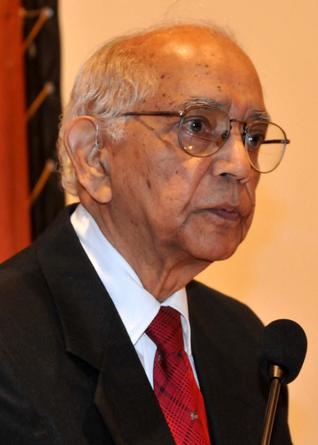
Iam honoured and touched that you are celebrating my centenary year. I appreciate your thoughtfulness and kindness.
I started my academic career with a Master’s degree in mathematics. In the early 1940s, the jobs in the field of mathematics were limited. I then stumbled into statistics by chance. Statistics was a relatively new subject in India then. I was one of the first five students to get a Master’s degree in statistics from Calcutta University. My career in statistics progressed as I got a Ph.D. in statistics from Cambridge University and I continued to work at the Indian Statistical Institute in Calcutta. At the Institute, there was a rich, supportive environment to pursue research and to teach, in addition to my administrative responsibilities. After retirement from the Institute, I worked at several universities in the United States, including the University of Pittsburgh and the Pennsylvania State University, which further enriched my experiences.
I was fortunate to have made some fundamental contributions to the field of statistics and to see the impact of my work in furthering research. In my lifetime, I have seen statistics grow into a strong independent field of study based on mathematical, and more recently computational, tools. Its importance has spread across numerous areas such as business, economics, health and medicine, banking, management, physical, natural, and social sciences.
Statistics is the science of learning from data. Today is the age of data revolution. There is therefore, a heightened need for statistics—both in terms of training in statistics to help analyze and interpret the data, and in terms of research to answer new questions arising from the data. The demand for statisticians is growing worldwide. For instance, the US Bureau of Labor lists statistics as one of the fastest growing career fields—and predicts it will grow by 33\% between 2016 and 2026.
Therefore, we have our work cut out for us as researchers and as teachers. This is the challenge for all of you.
My best wishes and blessings to all of you—my friends and well-wishers.
10 September 2019
Calyampudi Radhakrishna Rao or C.R. Rao wrote an autobiographical account “Statistics as a Last Resort”, highlighting the circumstances and influences that led him to a career in statistics and probability. Spending a lifetime putting this chance to work, he has built an inspiring, and a lasting, legacy.
Early Life
C.R. Rao was born to C.D. Naidu and A. Laxmikanthamma on 10 September 1920, in Huvvina Hadagalli, then in the integrated Madras Province but now in the state of Karnataka. His father, C.D. Naidu, was a reputed Inspector of police, working at the Criminal Investigation Department. When Rao was only five years old, in 1925, he was able to memorize multiplication tables up to 16 by 16, which was needed for monetary transactions during the British rule. This was because of the monetary denomination of the Indian rupee at the time, where 16 Annas made a Rupee, 12 Kanis made an Anna and 4 Dammidies made a Kani. Rao’s father’s job required the family to move from place to place every three years, so Rao completed his education in classes two and three at Gudur, classes four and five in Nuzvid and the first and second forms in Nandigrama, all in the present state of Andhra Pradesh.
After retirement, Rao’s father decided to settle down in Visakhapatnam, a coastal city in Andhra Pradesh. Rao finished his high school and obtained his first college degree B.A. (Hons.), with a first class and first rank, in Visakhapatnam. Though Rao’s early childhood involved frequent relocations, they did not affect him since his parents provided him guidance and an environment conducive to excellence in studies and instilled a work ethic that enabled him to achieve higher goals in his life. Rao said that he inherited his father’s analytical ability and his mother’s zeal and industry. His mother was instrumental in instilling a sense of discipline in him. In his book on Statistics and Truth: Putting Chance to Work (1989), Rao acknowledges her contributions to his life with the dedication:
Rao developed a research interest in mathematics during his course of study as a student in the B.A. (Hons.) degree course, at the age of 17, at the Andhra University. He used to solve problems posed in the journal The Mathematics Student and was happy to see his name mentioned as one who solved a problem in a particular issue. His most inspiring teacher was a Cambridge-trained mathematician, Dr. Vommi Ramaswami, who was the head of the Department of Mathematics. Rao obtained his B.A. degree at the age of 19 and wanted to pursue a research career in mathematics. With a first class and first rank in his B.A. (Hons.) degree examination, Rao thought he would qualify for a scholarship for further research in mathematics but did not qualify. He then decided to search for a job and saw an advertisement for a mathematician at an army survey unit in North Africa during the Second World War. He went to Calcutta and appeared for an interview for the job but this too eluded him. However, during his stay in Calcutta, he met Mr. Subramanian, who was employed in Bombay, but had been sent to Calcutta for training in statistics at an institute called the Indian Statistical Institute (ISI). This chance encounter led Rao to join this training program in statistics at ISI, hoping that with this additional qualification, he could get a job.

40 years at the Indian Statistical Institute
Rao joined the ISI in 1941, at the age of 20, and began independent research and published some of these results. He received his M.A. degree in Statistics from Calcutta University in 1943 with a first class, first rank with his score at graduation still an unbroken record. Rao was given the position of a research scholar at ISI in 1943 and a part-time job in Calcutta University to teach a course in statistics. He continued to carry out his independent research on a variety of topics in combinatorics and parametric estimation.
Then, in 1946, the Department of Anthropology at Cambridge University requested the ISI to send a person to analyze measurements made on human skeletons obtained from Jebel Maya in North Africa by the University Museum of Archeology and Anthropology. The goal of the project was to trace the origin of the people who lived there, using the Mahalanobis D^2 statistic, which was devised by P.C. Mahalanobis, the founder of the ISI. At that time, the theory behind the statistical analysis of multiple measurements was not well developed. Rao was sent to Cambridge by Mahalanobis as he had the required expertise to work on this problem. Rao worked in Cambridge for two years (1946–48) as a visiting scholar at the Cambridge University Museum of Archeology and Anthropology and developed new methods of analysis of multiple measurements and used them to analyze the data. The results of his work on the skeletal material were published in the book Ancient Inhabitants of Jebel Maya by Cambridge University Press in 1955. During this period, while working in the museum, Rao registered for a Ph.D. degree under the supervision of Sir Ronald A. Fisher, a towering figure in mathematical statistics. Rao received his Ph.D. in 1948 for his work on developing new multivariate methodology, called Multivariate Analysis of Variance (MANOVA), which generalized ANOVA, as well as other other multivariate tests that he developed while analyzing skeletal data. Much later, in 1974, Cambridge University awarded him an Sc.D. degree in 1974 based on a peer review of his publications and he was made an Honorary Life Fellow of King’s College, Cambridge.
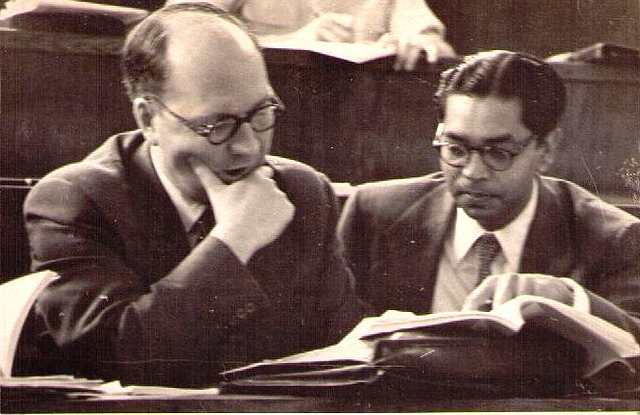
After his two-year stay at Cambridge, he returned to ISI in 1948 and was appointed as a professor at the young age of 28. He worked at ISI in various positions—Head of Research and Training School (RTS), Director of RTS, Director of ISI, Jawaharlal Nehru Professor and National Professor—over a period of 40 years and took mandatory retirement at the age of 60. During this time, he published 201 research papers. Upon his retirement, he accepted positions of distinguished professorships in the U.S. which had minimal teaching responsibilities. He took an appointment as University Professor at the University of Pittsburgh for eight years, and as Eberly Chair Professor of Statistics at Pennsylvania State University for 13 years, continuing his research in diverse areas of statistics. He then retired from Penn State at the age of 81 but continued his research as Director of the Center for Multivariate Analysis at Penn State until 2008. Over this close to forty-year period after his retirement, Rao published another 274 papers!
Development of statistical education and training at ISI and across India
—Sir Ronald A. Fisher during his speech at ISI Calcutta, 1963.
During his appointment at ISI, Rao developed numerous courses in statistics which were later converted into Bachelor’s and Master’s degrees at ISI when it was declared as an Institute of National Importance by an act of Parliament in 1959 and empowered to offer courses of study leading to degrees in statistics. In fact, the courses that lead to the B. Stat and M. Stat degrees at ISI today were worked out by Rao. He also initiated the Ph.D. program in theoretical statistics and probability, with D. Basu, who is well-known for his seminal contributions to statistics, being Rao’s first Ph.D. student. Over the course of his career, Rao has been as successful with his mentorship of statisticians as he has been with his own research. Rao guided the research work of over fifty doctoral students, and according to the Mathematics Genealogy Project, Rao has nearly 650 academic descendants.
Aside from the B. Stat and M. Stat courses, Rao developed other courses to train statisticians to work in different applied areas. These students and trainees, who were deputed by research, government and industrial organizations to study at ISI, were given, in addition to formal lectures, on-the-job training in the design of experiments, biostatistics, industrial quality control and other areas. Rao established research units in ISI to work on special projects in subjects such as economics, sociology, psychology, genetics, anthropology, geology and related areas. The idea of establishing these applied research units was to enable interactions between statisticians and scientists to promote the application of statistical methods in research in other areas and to develop new statistical methods motivated by real problems. Along with Mahalanobis, Rao also played a significant role in establishing an International Statistical Educational Center (ISEC) at ISI in 1950 for training students and statisticians deputed from developing countries.

During the early years of Rao’s stay at ISI, there was no Ministry for Statistics. But Jawaharlal Nehru, who was the Prime Minister at that time, was greatly interested in the development of statistics for economic planning. Mahalanobis, the founding Director of ISI, was appointed as honorary statistical advisor to the cabinet of the central government in 1949. Nehru visited ISI a number of times at the invitation of Mahalanobis. Rao had the opportunity of discussing with Nehru the national statistical system and training of statisticians to work in state statistical bureaus. Under Mahalanobis’ direction, Rao would help set up state statistical bureaus across India.
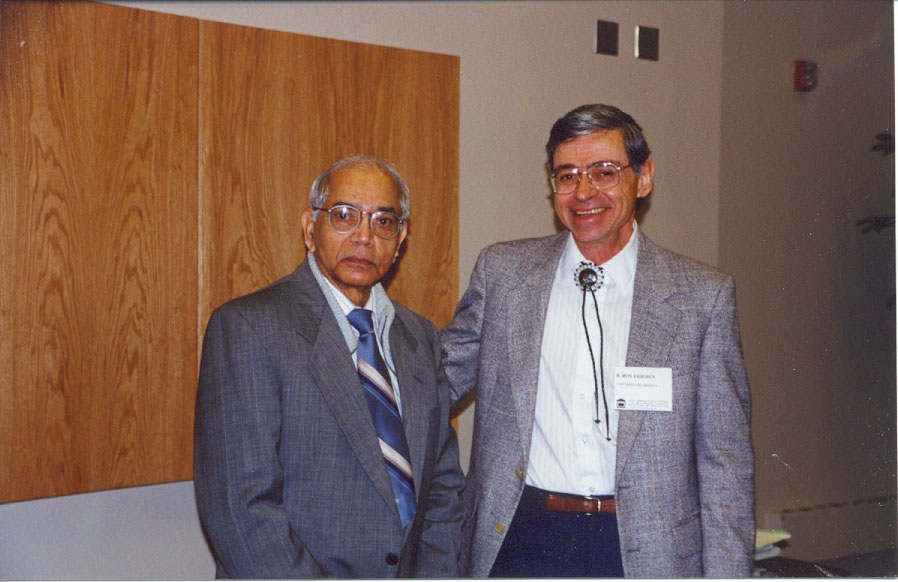
Rao was also a member of several government committees for the development of national statistical systems, statistical education and research in India. He served as Chairman of the Committee on Statistics (1962–69), Chairman of the Demographic and Communication for Population control (1968–69), Chairman of the Committee on Mathematics, Atomic Energy Commission, AEC (1969–78), Member of the Committee on Science and Technology, COST (1969–71), and a member of the Justice Sarkar Committee to enquire into the overall functioning of the Council of Scientific and Industrial Research in India.
Research during 1945-50 at ISI
—Terry Speed, FRS, Institute of Mathematical Statistics Bulletin, Jan–Feb, 2010
Rao’s career in statistics is dotted with remarkable achievements. Two of Rao’s papers, written during the 1940s, were reproduced in the book Breakthroughs in Statistics, 1890-1990 edited by S. Kotz and N.L. Johnson. One of these papers is “Information and accuracy attainable in the estimation of statistical parameters” (Bull. Cal. Math. Soc. 1945. 37: 81–91) and another is “Large sample tests of statistical hypotheses concerning several parameters with applications to problems of estimation” (Cambridge Philos. Soc. 1947. 44: 50–57). His 1945 paper opened up several new areas of research and generated several technical terms bearing his name, such as Cramer–Rao inequality and Rao–Blackwellization, concepts which are basic to estimation theory and appear in undergraduate textbooks on statistics and econometrics. The method of Rao–Blackwellization published provides a method by which an unbiased estimator of a parameter can be improved in efficiency when a sufficient statistic for that parameter exists. In fact, in the book Physics from Fisher Information, the author, B. Roy Frieden, states that “the Heisenberg Uncertainty Principle is an expression of Cramer–Rao Inequality of classical measurement theory….” Physicists have since derived a quantum version of the Cramer–Rao Bound that provides a more stringent version of the uncertainty principle.
In fact, in this 1945 paper, Rao proposed a differential geometric foundation for statistics by introducing a quadratic differential metric in the space of probability measures. The idea of connecting statistics and differential geometry was too early at that time. However, half a century later, his idea has been developed to become one of the most active and important topics in information science connecting statistics, information theory, control theory and statistical physics. The concept of distance between two probability measures introduced by Rao using differential geometric concepts is known as Rao distance. The metric is known as Fisher–Rao metric, since Rao used the notion of Fisher information in defining the quadratic differential metric.
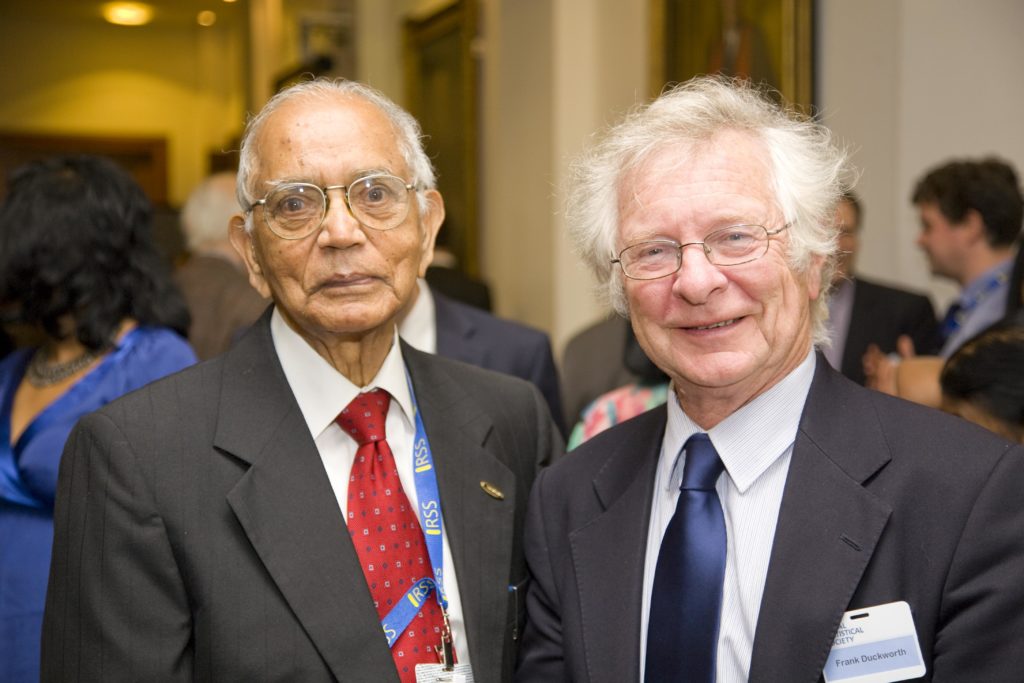
The second breakthrough paper published in the Proc. Cambridge Philos. Soc. introduced a new asymptotic test, termed as Rao’s Score Test, as an alternative to the likelihood ratio and Wald tests. These three tests together are known as the holy trinity in statistics. The test appears in books on econometrics and its merits are discussed in various conferences. Some features of this test are discussed in a paper by Chandra and Ghosh (Sankhya A. 1983. 45: 228–246).
In another series of papers, Rao developed a theory behind a set of combinatorial arrangements called orthogonal arrays,2 which was accepted by the editor “as a fresh and original piece of work”.3 Orthogonal arrays have been widely applied in industrial experimentation to determine the optimum mix of factors for maximizing output using observations on a small number of factor combinations. Some of these applications are known as the Taguchi methods, developed by Genichi Taguchi, who learnt about arrays during his visit to ISI.
In another set of papers written during this decade, one of which was on the choice of a minimum set of measurements for analysis,4 and another that was the first attempt to represent high-dimensional data in a two- or three-dimensional graph,5 Rao laid the foundation of the modern theory of multivariate statistical analysis. Ultimately, most of the papers Rao published during 1945–49 contributed to the development of statistics as an independent discipline.
Rao’s research from the 1950s onwards
In statistical parlance, an estimator is said to be first-order efficient if its asymptotic variance attains the Cramer–Rao lower bound. Under some conditions, the first order efficiency holds for a large class of estimators. In order to choose a subclass amongst these first-order efficient estimators that are better than others, Rao introduced a criterion called second-order efficiency.6 This is the first paper which initiated studies on higher-order asymptotics of estimators. In another paper in 1995,7 Rao used the idea of canonical correlations to estimate dominant factors that explain the correlation between measurements. This method is known as Rao’s canonical factor analysis.
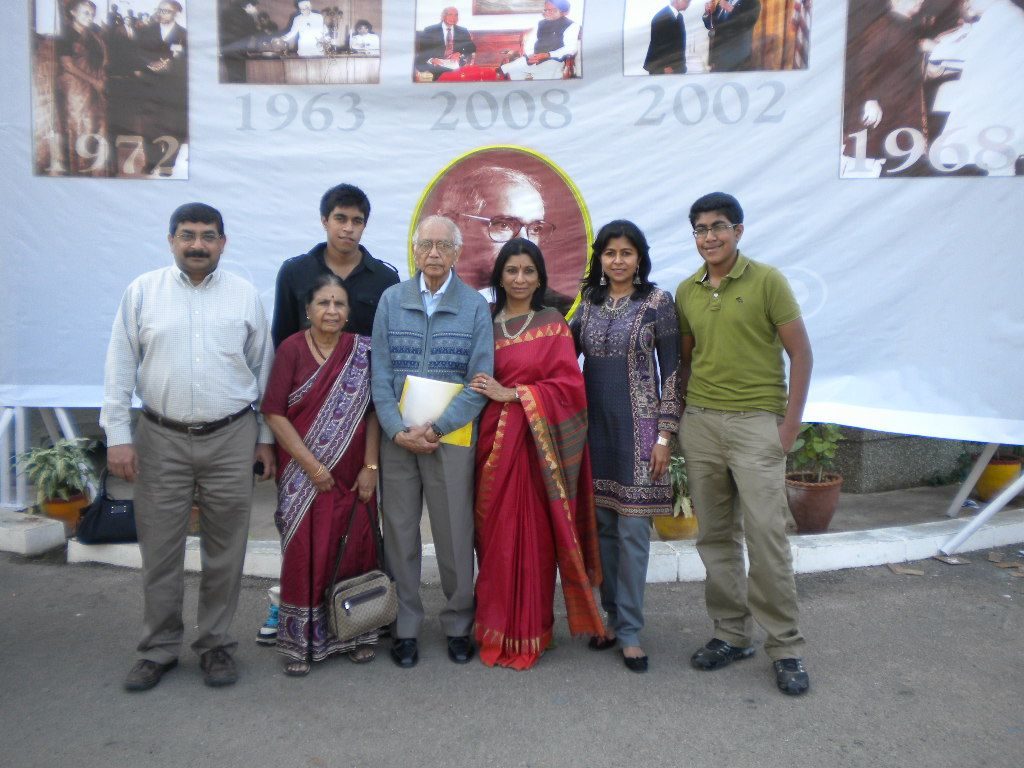
During his time at ISI, Rao also made significant contributions to results on the characterization of probability distributions. These results are described in the book co-authored by Rao.8 Some of the technical terms arising out of his characterization of probability distributions are `Rao’s Damage Model’ (1963), `Rao–Rubin Theorem’ (1964), and the `Kagan, Linnik and Rao Theorems’ (1963). Rao continued his research on the characterization of probability distributions in the U.S. in collaboration with C.G. Khatri, and D. Shanbhag. The results are summarized in the book Choquet–Deny Functional Equations with Applications to Stochastic Models by C.R. Rao and D.N. Shanbhag, Wiley, New York (1994). In the area of functional equations in mathematics, he introduced a new equation called the Integrated Cauchy functional equation. This equation provided a general technique for characterizing probability measures and solving problems of stochastic modelling of data for statistical analysis, as discussed in the paper “Solution to the integrated Cauchy functional equation on the whole line” (Sankhya. 1984. 46: 311–319) by Ka-Sing Lau and C.R. Rao. This equation provided a general technique for characterizing probability measures and solving problems of stochastic modelling of data for statistical analysis.
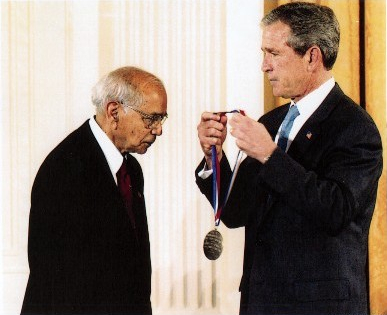
In the 1980s, Rao introduced a series of measures that quantify information and variation in data. In collaboration with Jacob Burbea, University of Pittsburgh, he introduced one such series of measures based on information-theoretic notions of entropy.9 Rao also developed analysis of diversity (ANODIV), which generalized the idea of analysis of variance (ANOVA). He also introduced what is termed as Rao’s Quadratic Entropy,10 a general measure of variance which is used by ecologists. Rao developed the concept of cross-entropy in the paper “Cross entropy, dissimilarity measures and characterizations of quadratic entropy” (IEEE Trans. IT. 1985. 31(5): 589–593) written jointly with T.K. Nayak.
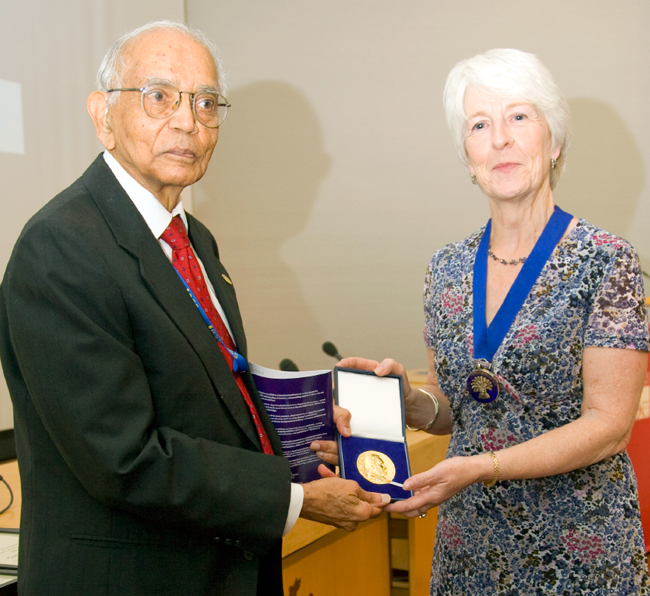
Matrix theory is another branch of mathematics he used in the discussion of statistical problems which in turn gave impetus to research on matrices. His most important contribution to the theory of matrices is the concept of a generalized inverse of a matrix, which is defined for both singular and non-singular matrices.11 Using this approach, Rao provided a general technique for characterizing probability measures and solving problems of stochastic modelling of data for statistical analysis. This also allowed him and others since to provide a unified theory of least squares estimation.12 Rao also generalized what are known as Kantorovich inequalities on matrices for use in statistics which opened a new area of research in matrix algebra.13
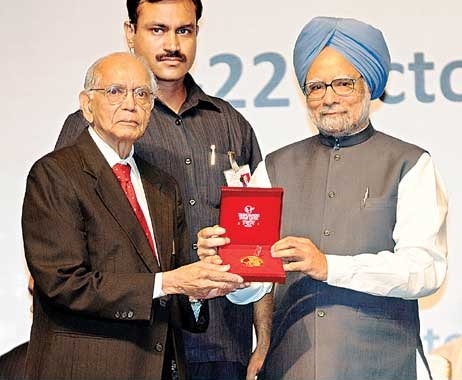
Rao had all his education in India and did most of his research by himself without any guidance from others. He is not just a statistician. His other interests include music and dance, and he pursues his hobbies of photography and gardening. When Rao moved from Calcutta to Delhi in 1970 to be at ISI Delhi, he was surprised to find there was no dance school to teach Kuchipudi and that it did not receive the same status as Bharatanatyam, Kathak, Kathakali and Odissi. He started a Kuchipudi dance academy at Delhi and was its first president. The academy organized regular performances in Kuchipudi and Rao was its president until 1979, when he left for the U.S.
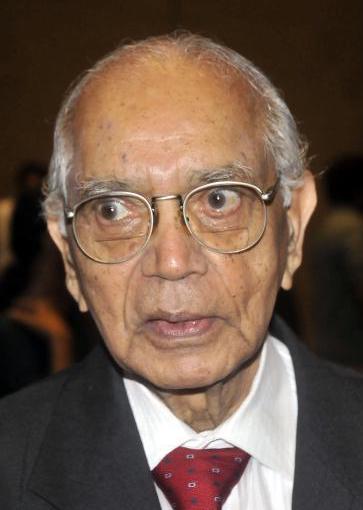
It is important to keep in mind that when Rao first joined ISI in the early 1940s, statistics was not considered an independent subject and no university offered courses at the Master’s level. Rao’s contributions have earned him a place in the history of statistics.
—Samuel Karlin
Footnotes
- “On a class of arrangements”. 1949. Proc. Edinburgh Math. Soc. 8: 119–125. ↩
- Frank Nielsen. 2016. “Interview with Professor Calyampudi Radhakrishna Rao”. Amstat News (1 December). ↩
- “Tests with discriminant functions in multivariate analyses”. Sankhya. 1946. 7: 407–414. ↩
- “Utilization of multiple measurements in problems of biological classification”. J. Roy. Statist Soc. Series B. 1948. 10: 159–203 “Tests of significance in multivariate analysis”. Biometrika. 1948. 35: 58–79. ↩
- “Asymptotic efficiency and limiting information”. Proc. Fourth Berkeley Symp. on Math. Stat. and Prob. 1961. Vol.1: 531–546. ↩
- “Estimation and tests of significance in factor analysis”. Psychometrika. 1955. 20: 93–111. ↩
- Characterization Problems of Mathematical Statistics by A. Kagan, Yu.V. Linnik and C.R. Rao, Wiley, New York (1973). ↩
- “On the convexity of some divergence measures based on entropy functions”. IEEE Trans, IT. 1982. 28(3): 489–495. ↩
- “Diversity and dissimilarity coefficients: a unified approach”. Theoretical Population Biology. 1982. 21: 24-43. ↩
- “Generalized inverse of linear transformations: A geometric approach”. Linear Algebra and its Applications. 1985. 66: 87-98. ↩
- “A unified approach to inference from linear models”. 1985. Proc. First International Tampere Seminar on Linear Models. Eds. T. Pukkila and S. Puntanen, 361–383. ↩
- C.G. Khatri and Rao. “Some generalizations of Kantorovich inequality”. Sankhya A. 1982. 44(1): 91-102 “The inefficiency of least squares: Extensions of Kantorovich inequality”. Linear Algebra and its Applications. 1985. 70: 249–255. ↩
